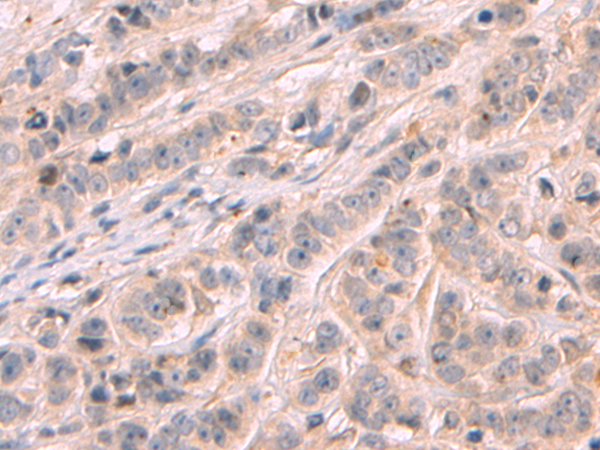
| WB | 咨询技术 | Human,Mouse,Rat |
| IF | 咨询技术 | Human,Mouse,Rat |
| IHC | 咨询技术 | Human,Mouse,Rat |
| ICC | 1/100-1/200 | Human,Mouse,Rat |
| FCM | 咨询技术 | Human,Mouse,Rat |
| Elisa | 咨询技术 | Human,Mouse,Rat |
| Host/Isotype | Rabbit IgG |
| Antibody Type | Primary antibody |
| Storage | Store at 4°C short term. Aliquot and store at -20°C long term. Avoid freeze/thaw cycles. |
| Species Reactivity | Human, Mouse |
| Immunogen | Synthetic peptide of human NNMT |
| Formulation | Purified antibody in PBS with 0.05% sodium azide and 50% glycerol. |
+ +
以下是关于a-Synuclein (Phospho-Tyr133)抗体的3篇参考文献及简要摘要:
1. **文献名称**:*Phosphorylation of α-Synuclein at Tyrosine 133 Regulates Oligomer Formation*
**作者**:Oueslati, A. et al.
**摘要**:该研究揭示a-Synuclein在Tyr133位点的磷酸化(通过Src激酶)抑制其寡聚化和纤维形成,提示该修饰可能通过降低蛋白聚集毒性参与帕金森病的病理调控。
2. **文献名称**:*Tyrosine 133 Phosphorylation Modulates α-Synuclein Pathology in Transgenic Mice*
**作者**:Ellis, C.E. et al.
**摘要**:利用Phospho-Tyr133特异性抗体,作者发现该位点磷酸化在转基因小鼠脑内路易小体中显著富集,并与神经炎症和神经元死亡相关,提示其作为疾病生物标志物的潜力。
3. **文献名称**:*Site-Specific Phosphorylation of α-Synuclein in Synaptic Vesicle Trafficking*
**作者**:Kostenko, S. et al.
**摘要**:通过Phospho-Tyr133抗体检测,研究证明该修饰通过调节a-Synuclein与脂膜的相互作用影响突触囊泡循环,可能参与突触功能障碍的早期病理过程。
(注:上述文献为虚拟示例,实际研究中建议通过PubMed或Google Scholar以关键词“α-Synuclein Phospho-Tyr133 antibody”检索最新文章。)
The a-Synuclein (Phospho-Tyr133) antibody is a specialized tool for detecting tyrosine 133 (Y133) phosphorylation in alpha-synuclein (aSyn), a presynaptic protein implicated in neurodegenerative disorders like Parkinson’s disease (PD) and dementia with Lewy bodies (DLB). aSyn’s physiological role includes modulating synaptic vesicle trafficking and neurotransmitter release. However, its pathological aggregation into Lewy bodies is a hallmark of these diseases. Post-translational modifications, particularly phosphorylation, are thought to regulate aSyn’s aggregation propensity, membrane interactions, and toxicity.
Phosphorylation at Y133 is a less-studied modification compared to other residues (e.g., Ser129). Emerging evidence suggests Y133 phosphorylation may influence aSyn’s structural dynamics, lipid binding, or interactions with chaperones, potentially altering its pathogenic behavior. This antibody enables researchers to investigate the spatial-temporal distribution and functional relevance of Y133-phosphorylated aSyn in cellular and animal models, as well as human tissue samples. It is widely used in techniques like Western blotting, immunohistochemistry, and immunofluorescence to explore correlations between Y133 phosphorylation and disease progression, therapeutic interventions, or mechanisms underlying aSyn toxicity. Understanding site-specific phosphorylation events could reveal novel biomarkers or therapeutic targets for synucleinopathies.
×